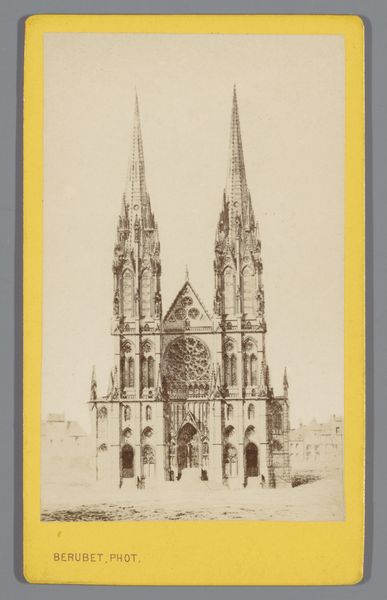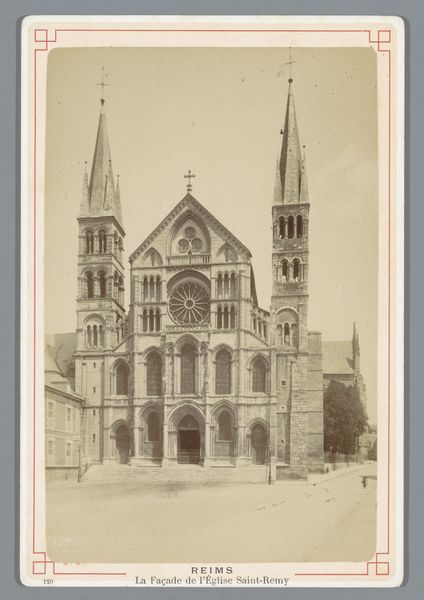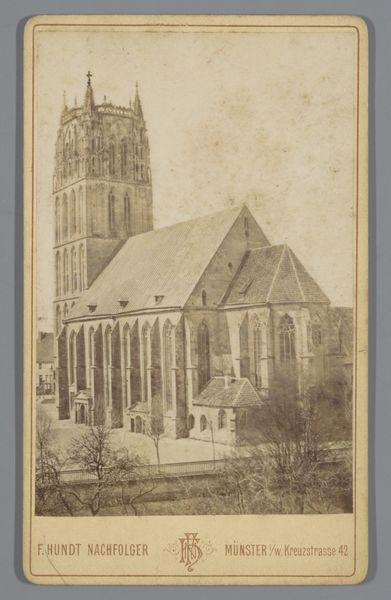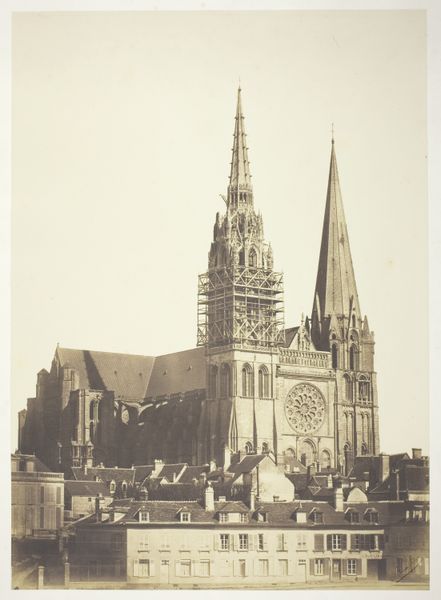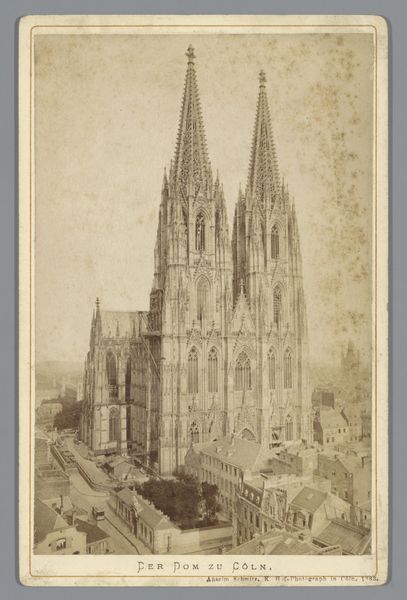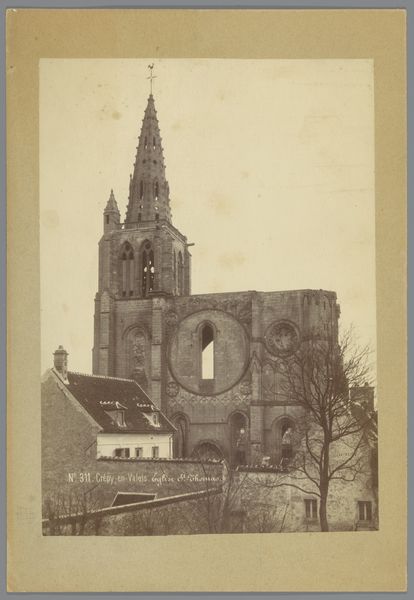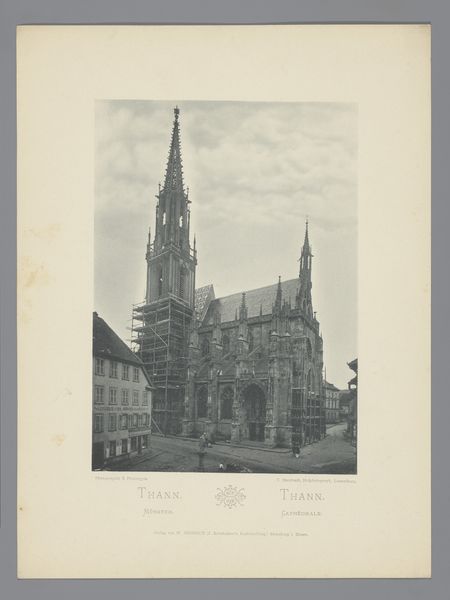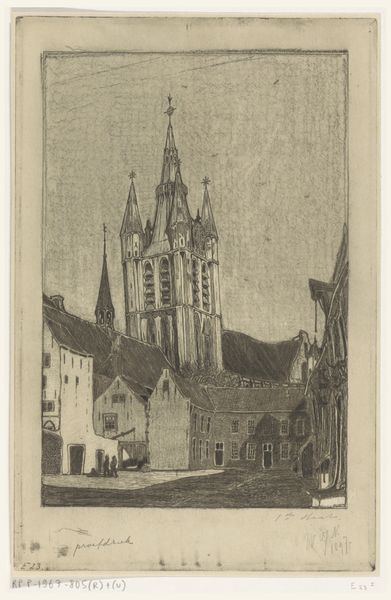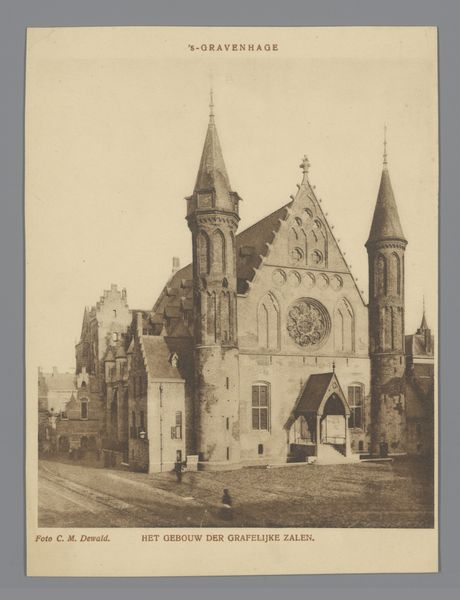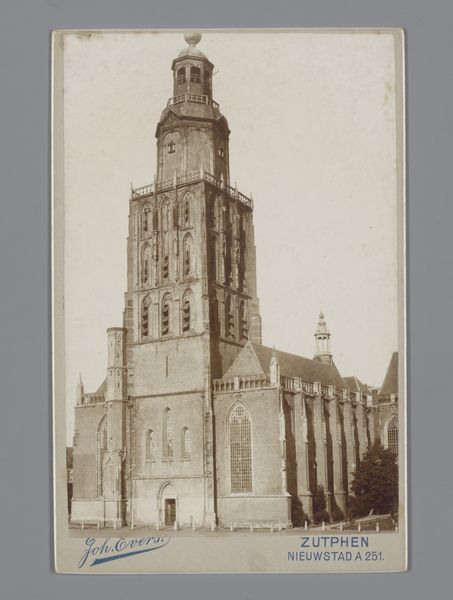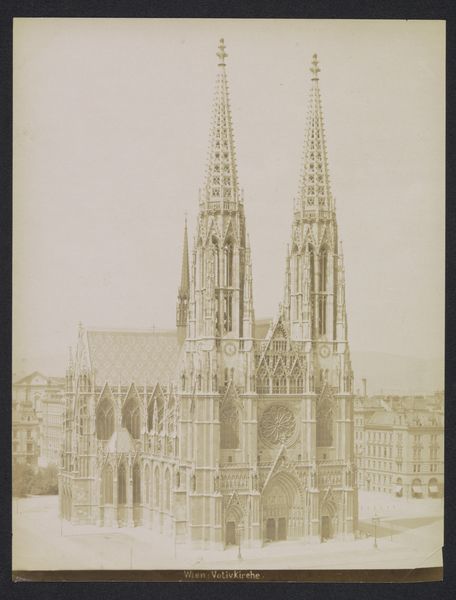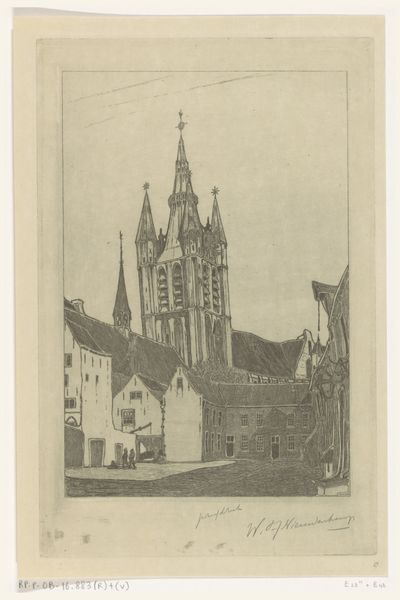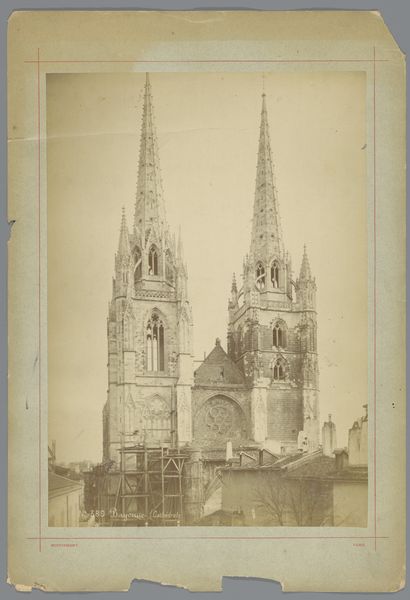
Dimensions: height 165 mm, width 111 mm
Copyright: Rijks Museum: Open Domain
Editor: This is a photograph titled "Abdijkerk Saint-Jean des Vignes te Soissons," taken around 1895 by Vergnol. The sepia tone and crumbling facade of the Abbey evoke a sense of romantic decay. What stands out to you about this image? Curator: The image, despite being static, pulsates with symbolism. Note how the two towers dominate, reaching for the heavens, yet are visibly in ruin. This speaks to a powerful duality: the enduring human aspiration for the divine against the inevitable decay of earthly structures. The very symmetry of the facade also suggests a striving for balance, though the crumbling stone betrays an inherent instability. Editor: I see what you mean. So the visual elements become almost like metaphors? Curator: Precisely. Think about the cultural context. By 1895, photography itself was becoming more widespread, democratizing image production. To photograph ruins – a cultural obsession of the Romantic period – meant inviting a wide audience to meditate on themes of mortality, memory, and the passage of time. Editor: What about the stark, vacant sky visible through the circular window of the facade? Curator: An interesting observation. To me, it acts as a liminal space, a portal. Does it signify the void left by the diminishing power of the church, or the boundless possibilities of the future? Consider the role light plays; illuminating what remains, suggesting what has been and what could be. It's a delicate play between absence and presence. Editor: I had not considered the future. The image felt very much focused on the past to me, so thank you. It’s interesting to consider all these layers of cultural meaning within one frame. Curator: It is through this lens, acknowledging visual language that these historical traces resonate so strongly, reminding us of our constant dance with time.
Comments
No comments
Be the first to comment and join the conversation on the ultimate creative platform.
